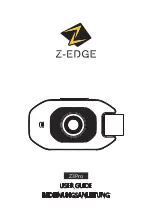
The evolution of
color-handling in photography
In 1907, the Lumière brothers
of France amazed the world by
launching the first commercial color
photography process. Known as
Autochrome, the process used a
filter consisting of grains colored
red, blue and green (the primary
colors of light). The filter was
spread over a glass plate, and the
colors were recorded horizontally.
Made from grains of potato-starch,
this RGB filter was rather crude,
yet even by today's standards, the
color photographs it produced are
amazingly vivid, considering that
they were taken a hundred years ago.
In later years, color film photography
evolved by a method in which three
layers of photosensitive material were
stacked vertically, and processes
using a horizontal orientation, like
the Autochrome process, were not
developed any further. But time
changes everything, and now that
digital photography has taken
over from film as the mainstream
technology, horizontally-oriented
color-handling has once again
become the standard approach.
Conventional digital cameras
use monochrome sensors.
Apart from the SD series and the DP
series, almost all the digital cameras
on the market use monochrome
sensors only capable of capturing
light intensity. Because these sensors
do not capture color data, a color
filter with a mosaic of pixels for the
three primary colors – red, blue and
green (RGB) – is mounted on top
so that color data can be
represented. But each light-sensing
photodiode has a one-color filter,
which means that each pixel can only
capture one color, and data for the
other two colors is discarded.
Until this stage, of course, as in
the Autochrome process, the RGB
color “particles”, or pixels, are
recorded unmodified, forming the
photo. A color interpolation process
known as demosaicing is therefore
performed in the latter stage of the
image processing, and this restores
the colors lost by individual pixels.
This interpolation process basically
consists of guessing the missing
colors by analyzing the neighboring
pixels, and adding those missing
colors back in.
Post-processing the image
leads to a loss of detail
Having been continuously improved
over an extended period, this
image-processing method has
matured to a certain extent, so the
color interpolation is now performed
fairly accurately. But because colors
are interpolated from neighboring
pixels, the subtle color nuances of
the original subject are lost.
Conventional digital cameras using
color filter arrays also generate
color artifacts – colors not found
in the original subject – during the
demosaicing processing. This is
due to the action of the color filter
(generally a Bayer filter), which tries
to regulate the color distribution if
the subject contains too much detail
(high-frequency areas).
A conventional digital cameras
using a Bayer color filter has yet
another filter, known as an optical
low pass or blurring filter, interposed
between the lens and the sensor,
in order to suppress color artifacts.
The optical low pass filter acts on
the images resolved at a high level
by the imaging lens, its job being to
eliminate any detailed elements
likely to generate color artifacts
(high-frequency areas above
a certain level), immediately before
they reach the sensor. So it can
effectively suppress the generation
of color artifacts. However, the
downside is that it reduces the
resolution of the image.
The Foveon X3® captures
the very feeling in the air.
Have you ever looked at an image
generated by a digital camera and
noticed something, well… unnatural,
about it? The edges may be strongly
emphasized, and the image may
look reasonably nuanced, but there's
definitely something wrong. Right?
Images produced by Sigma's SD
series cameras, and by the DP series,
have what's been called an “emotional
quality”. The emotion comes with
a level of image quality that only
the Foveon X3® direct image
sensor can deliver. Image quality
of a clarity and exquisiteness easily
outclassing that of conventional
digital cameras. This level of image
quality reproduces the scene you
shot, right down to the feeling in
the air. It's only possible in a vertical
color-capture system that does not
require color interpolation, and an
image-processing system that does
not require an optical low-pass filter.
A conventional image-sensor,
on the other hand, fudges the colors,
and even cuts out high-frequency
areas. To compensate, the sharpness
processing is ramped up to give
some overall nuancing and a general
impression of high resolution.
This explains the tendency to
generate images that, as a whole,
have an unnatural feel. The colors
can be adjusted to some extent in
post-processing, but the detailed
data previously lost cannot be
recovered. The breathtaking image
quality delivered by the Foveon X3
®, which reproduces pure, rich data
and nothing else, has to be seen to
be believed.
Discards none of the original light
and color. And adds none either.
The SIGMA DP's Foveon X3®
direct image sensor utilizes the
special properties of silicon, which
is penetrated to different depths
by different wavelengths of light,
to successfully achieve full-color
capture for the first time ever in a
single-pixel site configuration. No
color filter is required. Like modern
color film cameras, it uses a method
that captures all the colors vertically.
Because it does not need color
interpolation or a low-pass filter,
the Foveon X3® produces images
that are sharp right from the start.
Therefore, sharpness processing
in the latter stages of the image
processing – creating edges and
emphasizing contours – can be
reduced to a minimum.
This is why reviewers have evaluated
the images captured by the Foveon
X3® as having a truly nuanced,
sharp feel and praised them
as very natural and demonstrating
superior image quality.
17








































